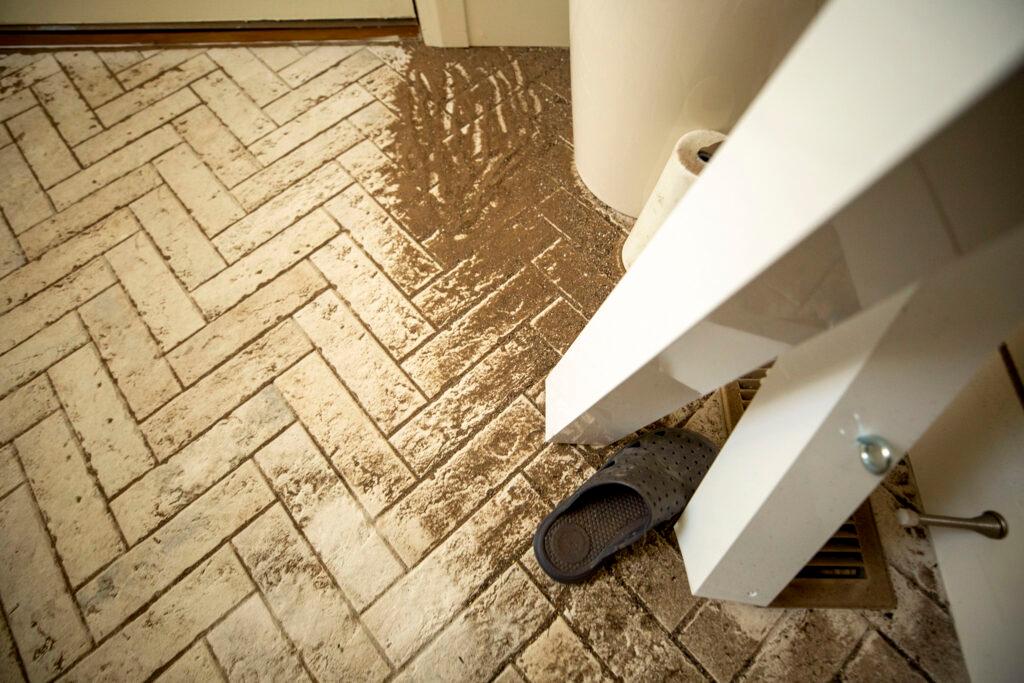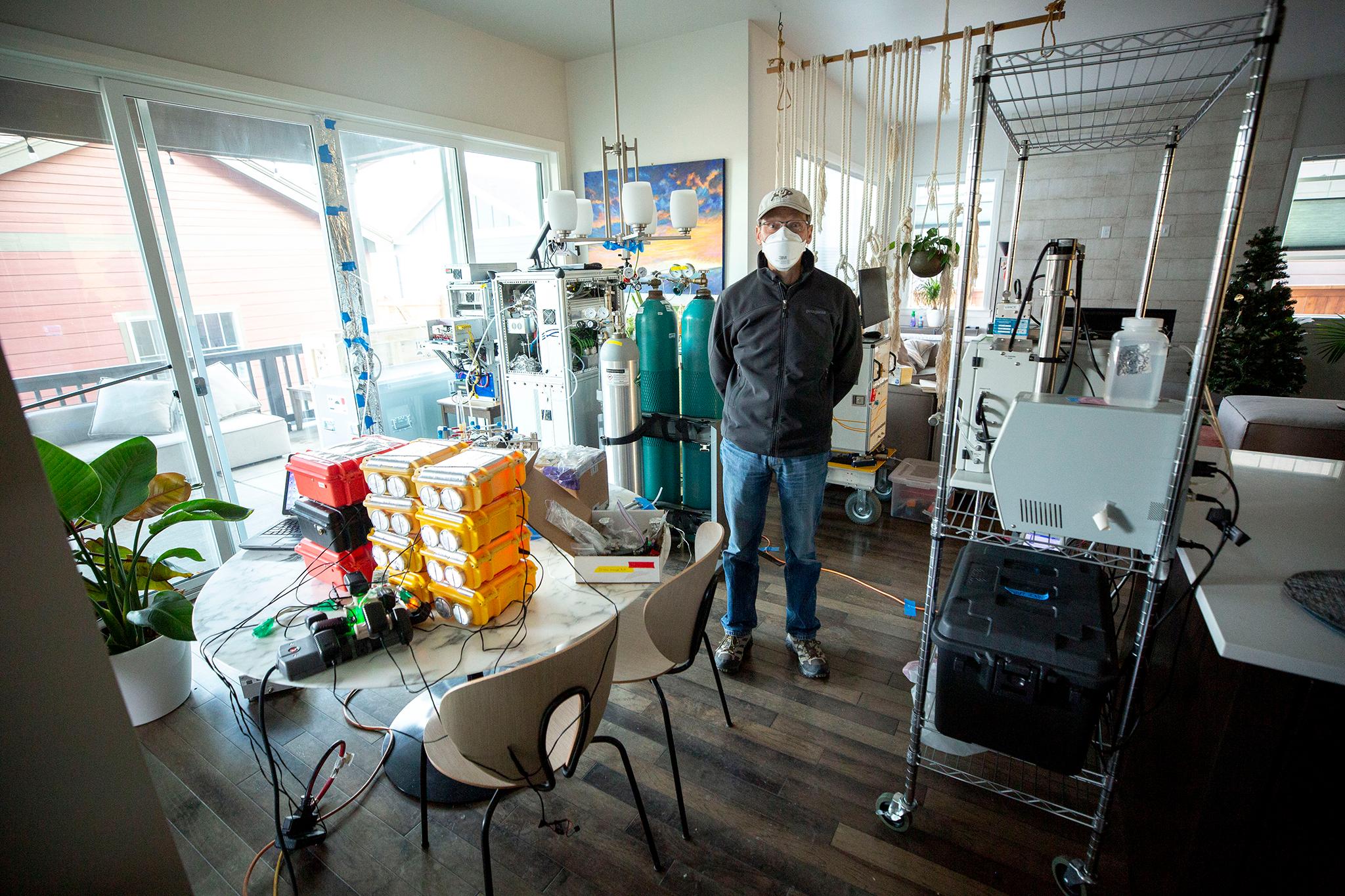
On a recent morning, Carsten Warneke, a research scientist at the National Oceanic and Atmospheric Administration, drove a van packed with air monitoring equipment into Louisville’s Harper Lake neighborhood. His mission was to find out more about the stench surrounding the devastation left by the Marshall fire.
As a state-of-the-art spectrometer sipped the air to measure toxins, Warneke took his own whiffs through the driver-side window. The scent grew thicker as the van inched past burnt-out cars and the blackened skeletons of basketball hoops. It got worse when he edged closer to the empty foundations of homes.
“It smells like the day after a campfire,” he said. “It might have some electrical smell in it as well.”
Since the Marshall fire, many residents have worried the odor hints at a lingering air quality risk. The fast-moving blaze started in grassy open spaces and ignited urban areas, consuming more than a thousand buildings made from particle board, plastic, metals and other materials. Other products inside, from paint to cleaning solvents, burned as well.
It’s not clear if all those synthetic remains are an immediate threat to people in or near the burn area. Researchers with NOAA and the University of Colorado Boulder scrambled in the fire’s aftermath, launching studies to monitor indoor and outdoor air quality.
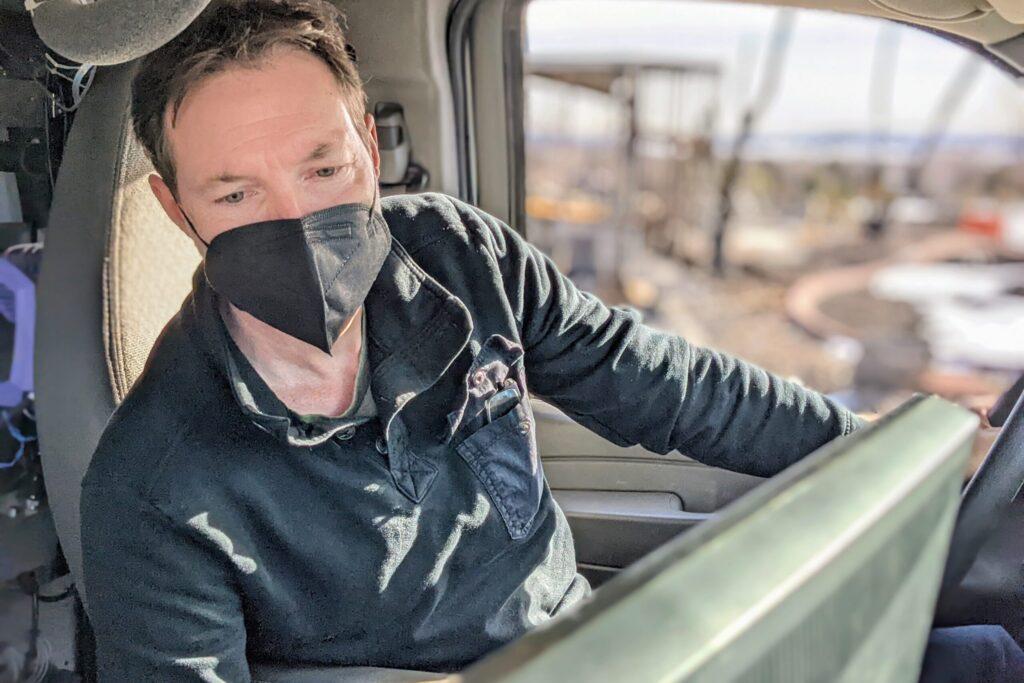
Their results could affect just how quickly — and safely — residents can return and rebuild.
Warneke was relieved by the initial results on his first drive through Louisville. A computer screen in the passenger seat showed low levels of dangerous air toxins like benzene. The biggest spike came as he pulled past a truck pumping exhaust onto a roadway outside the neighborhood.
“Looking at the concentrations, I wouldn’t be too worried at this point, but we haven’t analyzed the data in detail yet,” he said.
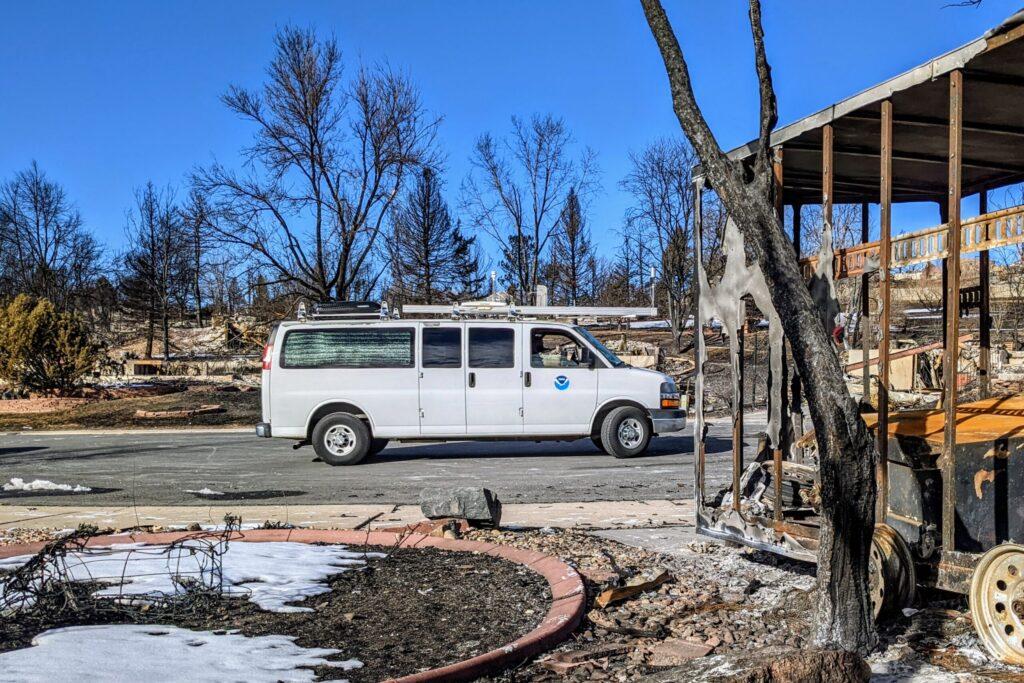
An air of uncertainty
The NOAA team has taken measurements at the request of Boulder County Public Health. Since the Dec. 30 fire, the county has issued a shifting set of recommendations based on its current understanding of the health risk.
The first set of guidelines advised people in the burn area or who live downwind to avoid outdoor exercise. On Friday, it released a statement with an updated set of recommendations. It asks anyone with respiratory illness to wear an N95 mask in the burn area.
On windy days, county health officials recommend everyone take the same precautions outdoors and keep doors and windows closed.
Camille Rodriguez, the executive director of the county health department, said one concern is particulate pollution. At the moment, snow has pinned ash and debris to the ground. If the weather dries out, clouds of tiny particles could lift into the air, each one small enough to burrow itself deep inside people’s lungs.
The threat has prompted the county to install air monitors throughout the burn area. Rodriguez said the county has yet to compile the data but plans to share preliminary results at a community meeting Thursday.
“We all wish we could have all of the information so that we can move on and feel safe,” Rodriguez said. “There’s more complexity to this than anyone realized.”
Meanwhile, the county asked residents not to sift through the remains of homes on their own since it risks kicking up ash and other debris. Some people have elected to try to recover belongings anyway.
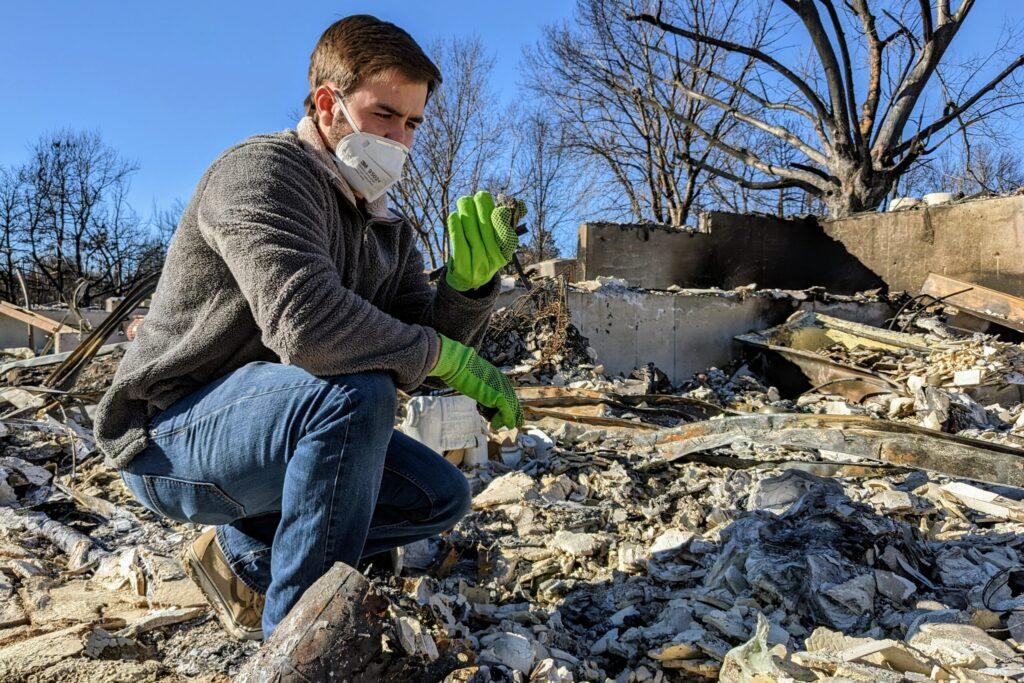
On the afternoon the NOAA van scanned Louisville for air toxins, Eric Ruggles returned to his parents’ burned-down home in the same neighborhood. The 24-year-old geologist sifted through the ashes looking for what remained of his childhood rock collection.
He came prepared with thick gloves and a high-quality P95 mask. While those precautions helped, he said his family quickly learned not to spend too much time near the remains of the home. He found a seashell fossil and a few other rocks before giving up.
“After the fire, you were there for 10 minutes and, by the time you left, you had a headache and your lungs felt like crap. The biggest thing is spending as short of time as possible and getting out,” he said.
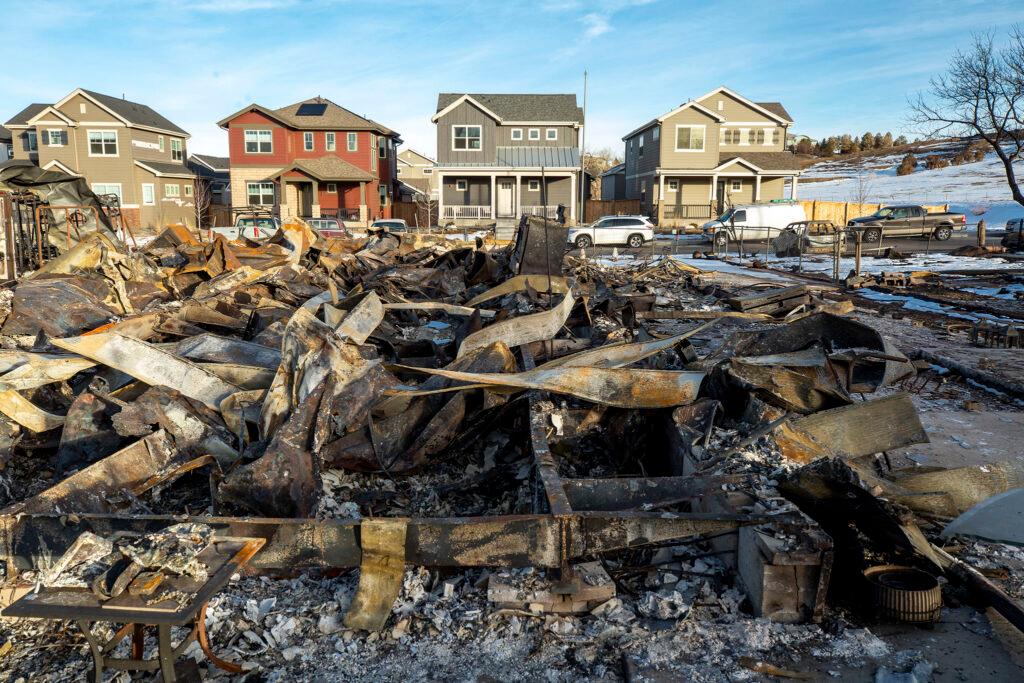
A stench inside the house
The fire destroyed more than 1,000 homes and damaged at least 149 more, according to county estimates. Volunteers are now helping the county with a complete assessment of smoke damage, which has forced Noah Abrams and many other residents from their homes to wait for cleaners and other remediation services.
Abrams’ house is across the street from an incinerated neighborhood in Old Town Superior. His family evacuated in a rush as the fire approached, abandoning the ingredients for a chicken soup lunch laid out across their kitchen. They have since landed in a Boulder hotel.
When Abrams made his first trip back, he noticed ash and soot piles behind doors and on window sills. He was also knocked back by the thick smell the fire imprinted throughout the home.
“It was just the worst smokey smell you could smell,” he said. “You could tell it was a lot of bad stuff in the air.”
A few days later, a father of one of his son’s classmates asked Abrams if he would allow scientists to take over the home temporarily to study the indoor air quality. He lept at the opportunity to learn more about the impact the fire left.
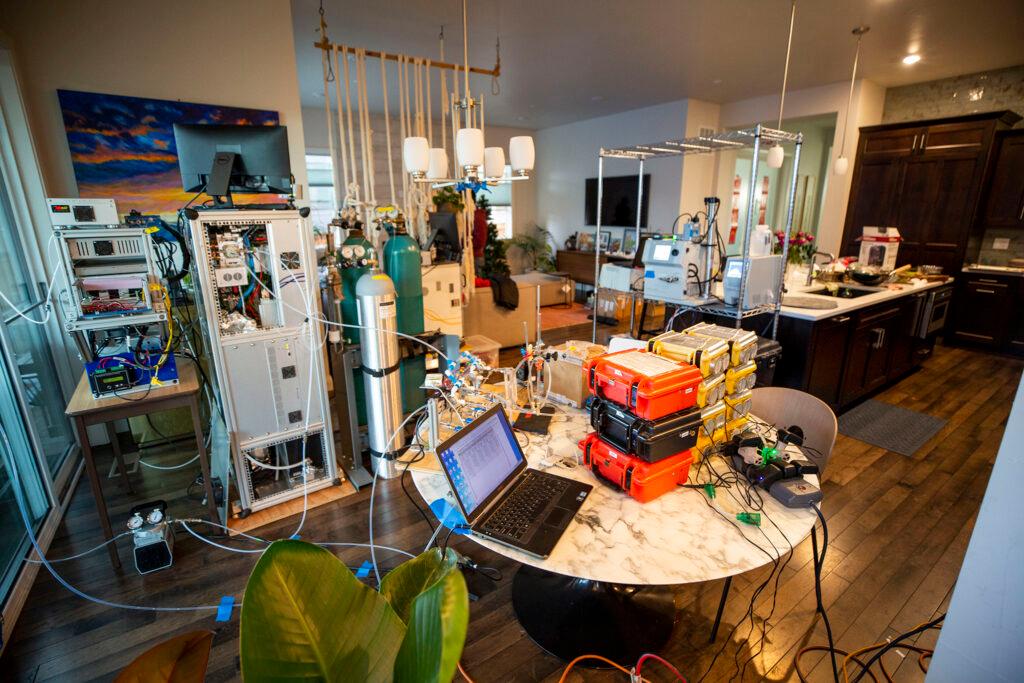
The connection led Joost de Gouw, a chemistry professor at the University of Colorado Boulder and a fellow at the Cooperative Institute for Research in Environmental Sciences, to pack the Abrams’ dining area with air monitoring equipment. Gas detectors and spectrometers are now tracking the long-term effects of smoke smothering the inside of the house.
“The home acted like a sponge. It really absorbed a lot of those gases. And that's why we’re still smelling things in here because it’s slowly being released from the walls, from the furniture, from the curtains, from the carpet, from a lot of the materials you have in a modern home,” de Gouw said.
The instruments have already picked up elevated levels of benzene, a known carcinogen.

The plan is to measure the effectiveness of recommended fixes, like professionally cleaning the home and ductwork. De Gouw also recommends air purifiers with both HEPA and activated carbon air filters along with low-tech solutions, like opening windows.
In the meantime, Abrams doesn’t plan to return to his home until the scientists ensure the indoors is safe — and maybe longer. He worries efforts to clear the debris nearby could kick up even more air pollution.
“I'm really worried about the outdoors,” he said. “I think that's the most important for us right now, especially with small kids.”
